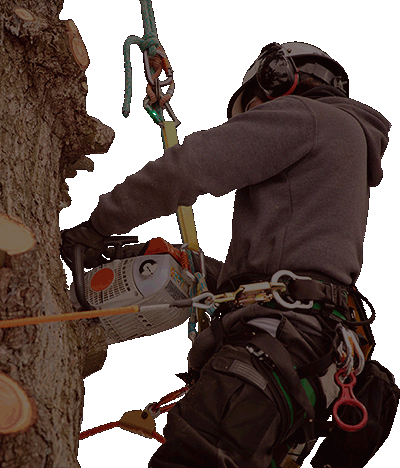
Just like us, Spartanburg trees need more than a once-and-done checkup with the doctor.
The best way to keep you – and your trees! – healthier is through small actions throughout the year.
The steps are simple once you know what they are. Think of these as “lifestyle changes” recommended by your Spartanburg tree doctor.
When it’s hot and dry, Spartanburg trees need more water. When it looks like they lack nutrients, Spartanburg trees need to be fed. Most importantly, they need you, their keeper, to keep an eye on them for potential problems.
All of these simple solutions to keep your Spartanburg tree healthy are detailed in plant health care programs. Learn what plant health care is and how it benefits your Spartanburg trees below.
What is the definition of plant health care?
Plant health care is a holistic approach to Spartanburg tree care. The focus is on developing and maintaining healthy plants, so they become less susceptible to problems.
By caring for plants and Spartanburg trees each season, they grow healthier and can better resist pests and withstand difficult problems.
Plus, your local Spartanburg tree expert will help predict and prevent problems before they happen.
An added bonus? Proactive Spartanburg tree care is almost always less expensive than the cost of treating an advanced problem or removing a large Spartanburg tree later on.
What is the goal of plant health care?
The goal of plant health care programs is to proactively keep your Spartanburg trees healthy, so they can avoid entering a decline spiral.
After Spartanburg trees endure repeated, severe or ongoing stressors, they begin a cycle of decline. During this time, Spartanburg trees focus on simply surviving and no longer have the ability to thrive. Once they hit a critical point in this cycle, it becomes almost impossible to reverse the trend and nurse the Spartanburg tree back to health.
Through plant health care programs, we stop Spartanburg trees from hitting this point. Instead, we keep them healthy from the get-go.
How do plant health care programs work?
Here’s an example of how plant health care programs keep Spartanburg trees healthy.
Say you have a birch Spartanburg tree in your yard.
Your arborist inspects your Spartanburg trees and soil before recommending the following in your plant health care program:
Expand the mulch ring around your tree.
Address compacted soil. To see if your soil is compacted, try the screwdriver test. The day after it has rained, you should be able to easily push a screwdriver into the soil.
Water your Spartanburg tree when it’s dry and manage its nutrients.
Inspect the leaves, bark and trunk for obvious pest and disease issues.
If a Spartanburg tree insect or disease is spotted, treat the problem early, so you can hopefully save the tree.
Thanks to your plant health care program:
You’ve provided all the ingredients to grow a healthy tree.
Now, your birch Spartanburg tree is less likely to be attacked by a pest like the bronze birch borer that favors stressed, weakened trees. In this case, you can skip the cost of bronze birch borer treatments.
If a problem is found during a Spartanburg tree inspection, you can seek early treatment, which is typically more effective.
You get to enjoy trees’ continual, cost-saving benefits.
What do plant health care programs include?
At Davey, each plant health care program is personalized for the specific trees, plants and troubles in your yard.
From coast to coast, Davey’s plant health care specialists found five Spartanburg tree care truths that impact all species of trees. Get the full scoop in this plant health care infographic.






